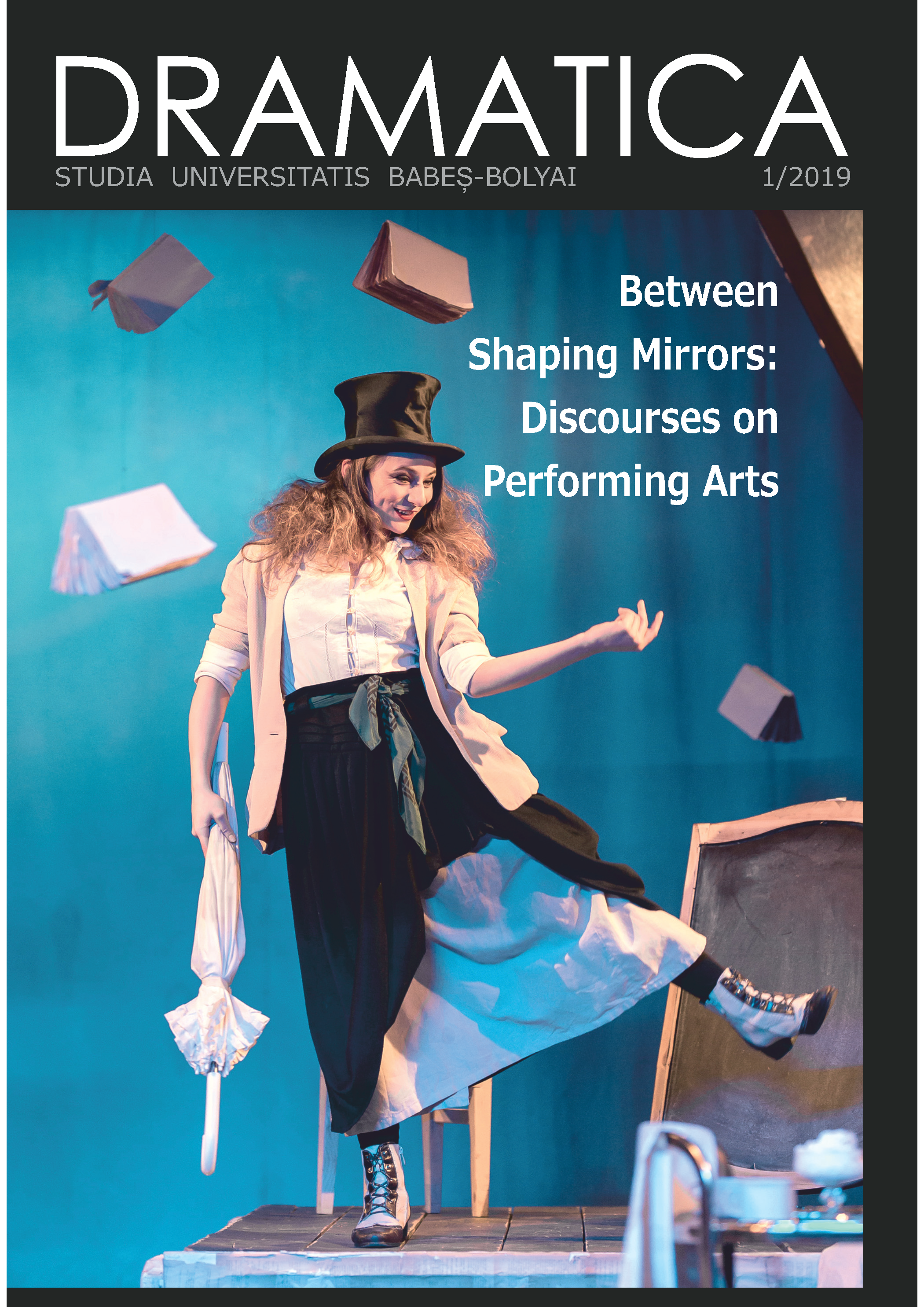The Socio-Political Implications of the 20ᵗʰ Century Narratives on Indian Dances
DOI:
https://doi.org/10.24193/subbdrama.2019.1.06Keywords:
Classical, Kūcipūḍi, Nationalism, Culture, Tradition, IdentityAbstract
From mentions of dance in treatises as old as 2ⁿᵈ century to regional variations around 13ᵗʰ century to the 20ᵗʰ century - dance has travelled, traversed and evolved. When the agenda of Nationalism was in vogue during pre and post-independence periods, there was a necessity to produce something unique to the nation and make a point about its rich heritage. Dance was one effective medium that served as a cultural symbol. This very notion modified the course of dance, its form and structure. The ancient practices were modified and tailor-made to suit agendas of the time and popular choices. This paper attempts to understand this phenomenon of how the socio-political ideologies have affected the Indian classical dances. The focus would be on the political affiliations specific to the Kūcipūḍi form of dance.References
AARUDHRA. “Kuchipudi - the Abode of Dance.” In IKDF Special Issue, edited by T. Udayavarlu. Hyderabad: AP Samskrutika Mandali, 2012.
BARKER, Chris. Cultural Studies: Theory and Practice. London: SAGE Publications, 2008.
CHAKRAVORTY, Pallabi. “From Interculturalism to Historicism: Reflections on Classical Indian Dance.” Dance Research Journal 32, no. 2 (2000): 108. https://doi.org/10.2307/1477983.
HARP ALLEN, Matthew. “Standardize, Classicize, and Nationalize: The Scientific Work of the Music Academy of Madras, 1930-53.” In Performing Pasts, edited by Indira Viswanathan Peterson and Davesh Soneji. New Delhi: Oxford University Press, 2008.
KANAKALINGESWARA RAO, Banda. “The Dance Tradition in Andhra.” In Kuchipudi Mahotsav ’99, edited by K. Subadra Murthy. Mumbay, 1999.
MCLEAD, John. Beginning Postcolonialism. New Delhi: Viva Books, 2010.
NANDIKESVARA. The Mirror of Gesture. Being the Abhinaya Darpana of Nandikesvara. Translated by Ananda Coomaraswamy and Gopala Krishnayya Duggirala. Cambridge, MA: Harvard University Press, 1917.
NIYOGI, Chandreyee. Reorienting Orientalism. New Delhi: SAGE Publications, 2006.
NORRIS, Christopher. Deconstruction - Theory and Practice. London: Routledge, 2002.
O’SHEA, Janet. “‘Traditional’ Indian Dance and the Making of Interpretive Communities.” Asian Theatre Journal 15, no. 1 (1998): 45. https://doi.org/10.2307/1124098.
PUTCHA, Rumya S. “Between History and Historiography: The Origins of Classical Kuchipudi Dance.” Dance Research Journal 45, no. 3 (December 25, 2013): 91–110. https://doi.org/10.1017/S0149767713000260.
RAMANATHAM, Chinta. “Kuchipudi Natya Charitra Putalu.” In IKDF Special Issue, edited by T. Udayavarlu. Hyderabad: AP Samskrutika Mandali, 2012.
SETH, Rajyalakshmi. “Development of Kuchipudi Dance in the Context of 20th Century Dance Renaissance in India.” Research Process 2, no. 1 (2014): 62–74.
SINGER, Milton. When a Great Tradition Modernizes: An Anthropological Approach to Indian Civilization. Chicago: University of Chicago Press, 1980.
UDAYAVARLU, T. “Yamini- Kuchipudi Nrityabhamini, Visvamohini.” In Sujanaranjani-Natyamanjari, edited by J. Chennaih. Milpitas, CA: University of Silicon Andhra, 2014.
VATSYAYAN, Kapila. Indian Classical Dance. Revised ed. New Delhi: Publications Division, 2015.
ZAVOS, John. Emergence of Hindu Nationalism in India. New Delhi: Oxford University Press, 2000.
Downloads
Published
How to Cite
Issue
Section
License
Copyright (c) 2019 Studia Universitatis Babeș-Bolyai Dramatica

This work is licensed under a Creative Commons Attribution-NonCommercial-NoDerivatives 4.0 International License.


